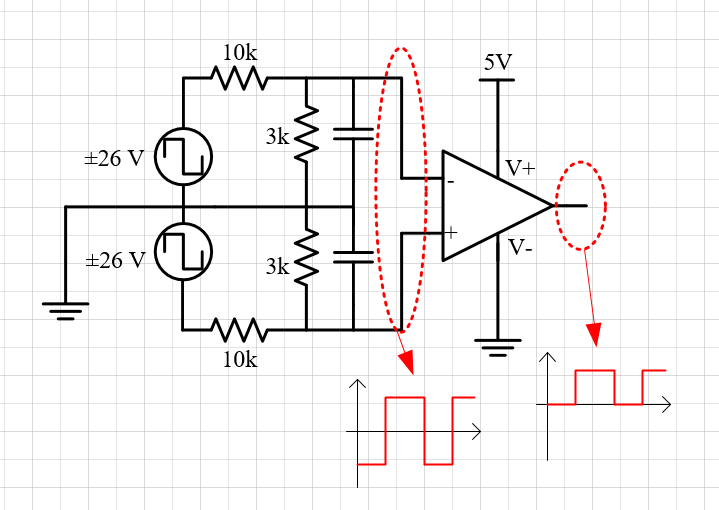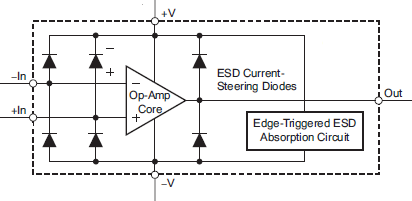Other Parts Discussed in Thread: LM393-N
The input voltage is alternative voltage with positive and negative. For easy understanding, I put two same square wave sources which only have +26 V and -26 V, and it means the input voltage of AMPLIFIER(divided by resistor)is +6V and -6V to the both input pins (to GND). It can change the alternative voltage source(with -6V and +6V) to a square wave(only with +5V and 0V). But the amplifier TLV3501 V- is connected to GND, so when input pin connected to -6V, it can be forced down to -0.3V of this pin. So is there a hidden danger in this circuit?
And if it is, any suggestion can you put forward?




